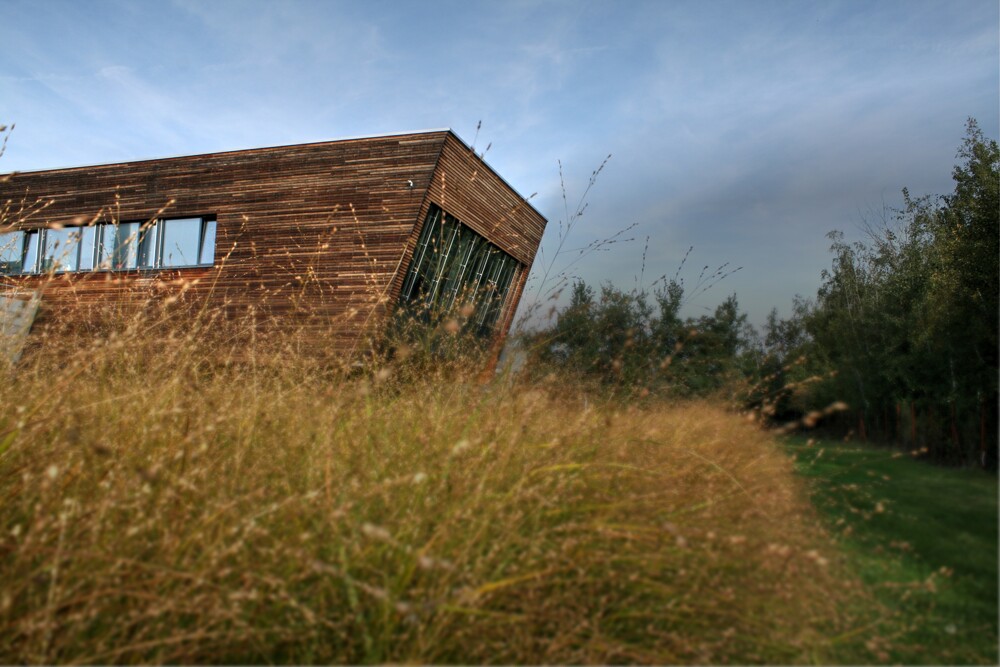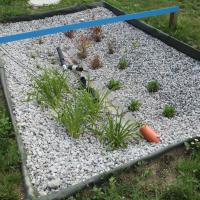

High temperatures and extreme drought during the summer season negatively affect the quality of life of urban residents. Concrete buildings and their asphalted surroundings accumulate a large amount of heat, creating so-called heat islands. We recently addressed this topic in an article about green roofs. In addition to green roofs and facades, specially designed gardens for capturing rainwater from the surface, so-called rain gardens, should prevent drought and overheating of cities. In the CTU UCEEB campus you will find two experimental rain gardens, which are used for research in addition to their natural function.
When viewed from above, the urban metropolis looks like an artificially created island, where heat accumulates thanks to concrete and asphalt surfaces. These heat islands are significantly warmer than the suburban surroundings. In cities, rainwater runs straight into the sewer as quickly as possible, which then prevents the natural evaporation of water into the air. As a result, the water cycle is disrupted, which affects climatic conditions. This can be prevented by proper stormwater management and the incorporation of rain gardens, green roofs and greenery into urban infrastructure.
The goal of rain gardens is to catch all the rainfall before the water goes down the drain. In this way, sewerage congestion will be avoided, the risk of flooding and pollution of surface streams will be reduced. The underground water supply is renewed by seepage, and the natural water cycle is restored by evaporation from the surfaces, which has a beneficial effect on stabilizing the climate. Under the term rain garden, we can imagine a depression in the ground, a lowered place in the garden or a bed with special plants that can capture and retain water with their root system until it is either absorbed and filtered through the soil layers into the groundwater, or evaporates.
At the ČVUT UCEEB, we can find two identical experimental rain gardens that were created in December 2017. Water is fed into one of the gardens from the roof of the Crawl Space experimental house. The second rain garden draws water from a storage tank. CTU UCEEB experts monitor moisture and soil potential, filter layers, water level in the rain garden and, to evaluate the water regime, the amount of water at the inflow and outflow. The goal of both experiments is to control water quality over a long period of time and monitor changes in the individual soil layers of the garden in terms of permeability, water retention, clogging of small holes with fine particles and capture of heavy metals. In the future, regular soil sampling is planned for the final evaluation of the development of the function of the filter layer in the long term. Even before the start of these two experimental rain gardens, pilot areas of rain gardens were established here, where the first evaluation regarding the change in soil structure took place. The evaluation was carried out on soil samples taken from the pilot plots of the rain gardens after two months of plant cultivation, on which infiltration experiments investigating the soil's infiltration capacity were carried out. The progress of the experiment was recorded by neutron and X-ray imaging. The research is carried out as part of project No. 17-21011S of the Grant Agency of the Czech Republic.